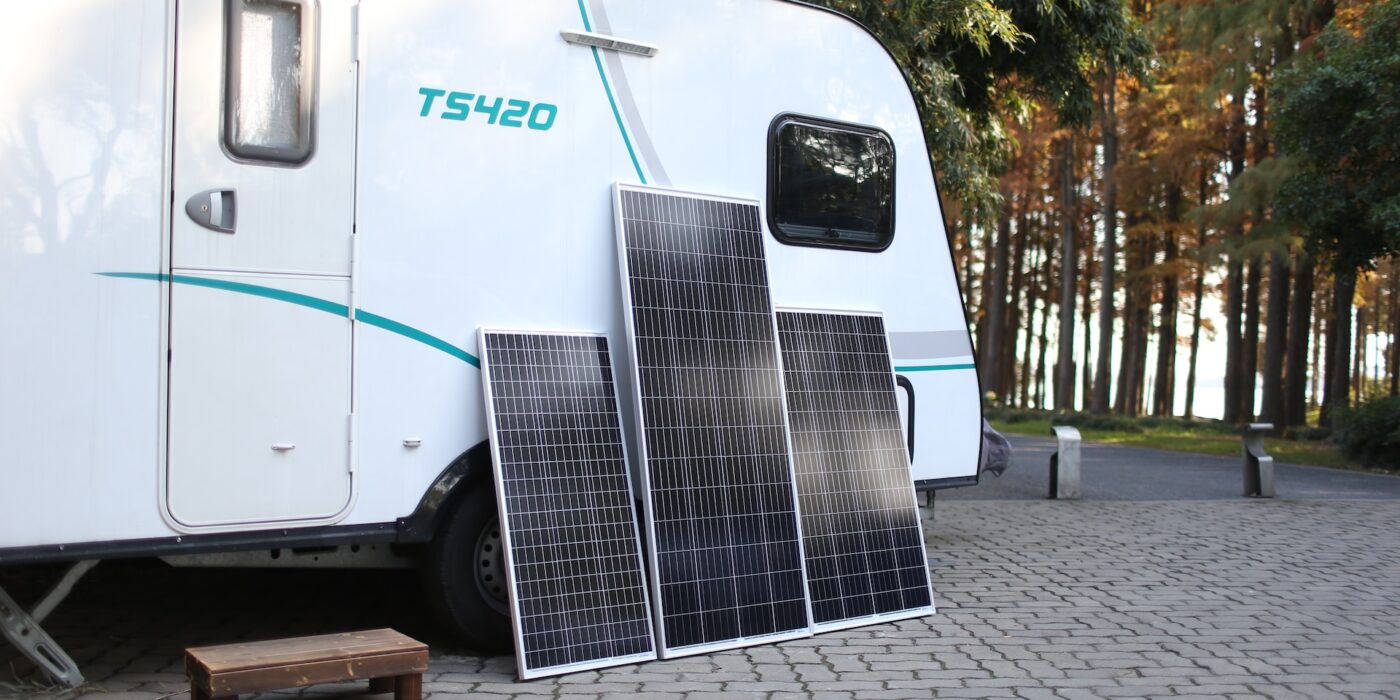As environmental concerns become more important, we think more often about alternative energy sources. One of the more popular solutions is solar energy, which helps reduce electricity bills but also helps reduce harmful greenhouse gas emissions. In this practical guide, we’ll explain how it works and how to install photovoltaic panels at home.
Solar energy is not only a matter of modern technology but also a real opportunity to contribute to the protection of our planet. By using the sun’s radiation to generate electricity, we not only save on our electricity bills but also take a step towards a sustainable lifestyle. In the rest of this article, you will learn about the principles of solar energy. We will discuss the financial and environmental benefits of installing photovoltaic panels, as well as provide tips on selecting, installing, and maintaining the system. Finally, there will also be a few words about energy storage and our Newell Power Stations.

How does solar energy work?
The generation of electricity using solar radiation has been with us since the mid-1950s. It was then that the first photovoltaic panel was developed. The technology is based on the use of the photoelectric effect, a phenomenon where semiconductor materials such as silicon or tellurium emit electrons when exposed to sunlight.
Photons, electrons, and electric current
Photovoltaic panels, also known as solar cells, consist of several such semiconductors connected in an array. When a photon of sunlight strikes the panel, an electron in the semiconductor is released, creating an electric current. This one is then transferred to an inverter, which converts it from direct current to alternating current, making it suitable for use in our homes.
The principle of photovoltaic panels is fascinating in its uncomplicatedness, yet it is the foundation of modern power systems based on renewable energy. It is through this simple yet advanced process that we can benefit from the sun’s rays while reducing our dependence on traditional, often polluting energy sources.
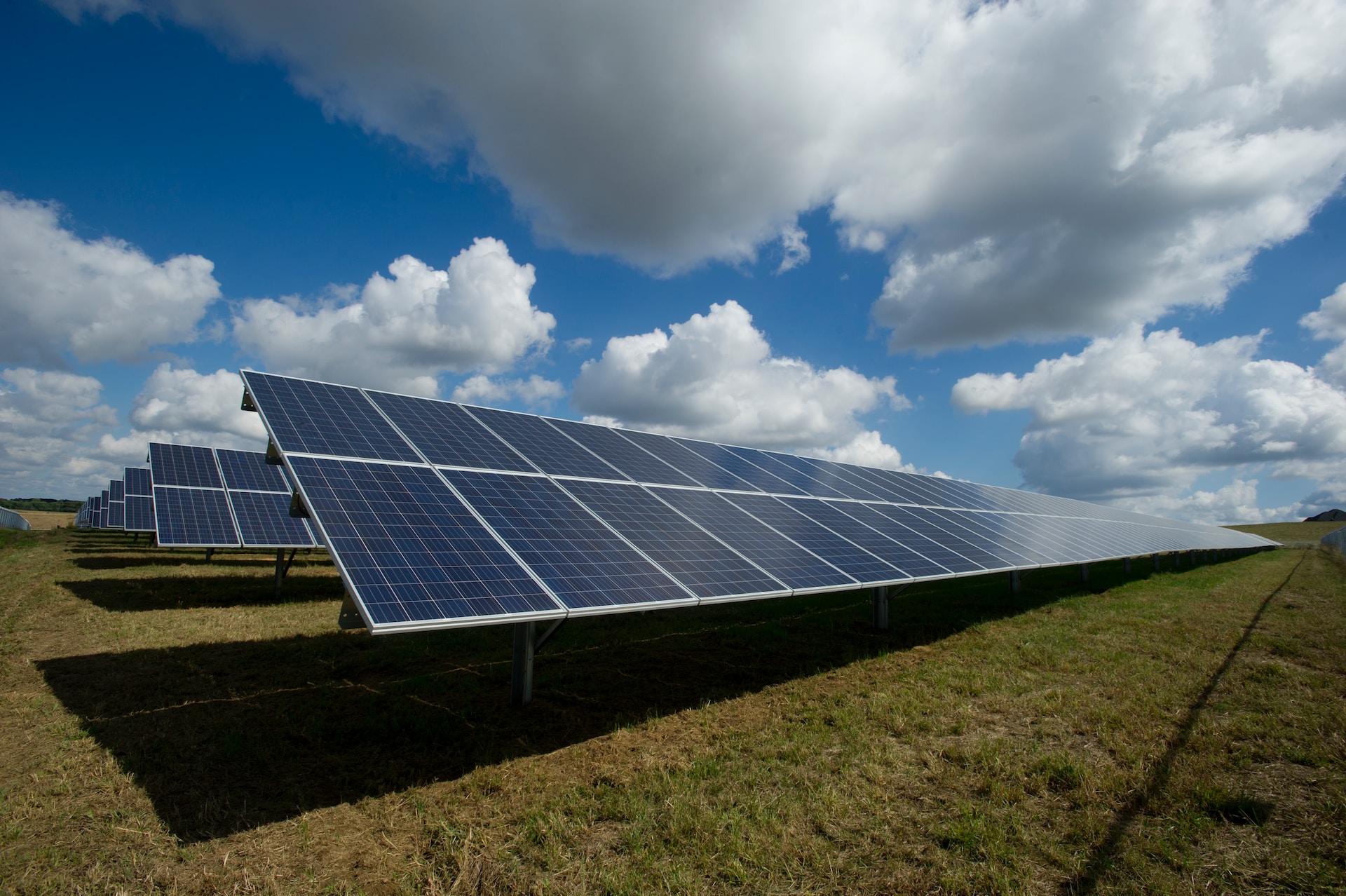
Financial and environmental benefits
Solar energy not only benefits our wallets but also our planet. Here are some key aspects to consider before investing in the installation of photovoltaic panels.
Savings on energy bills are one of the most visible and immediate effects of using solar energy. By producing your electricity from photovoltaic panels, you can see a significant reduction in your electricity bills. In addition, there is also no shortage of financial support programs and rebates which further reduces the cost of installation.
The reduction of carbon emissions is another aspect that is attracting more and more supporters of solar energy. Traditional sources of electricity, such as burning fossil fuels, generate large amounts of greenhouse gases, contributing to climate change. By using solar energy, we minimize our impact on the environment, helping to protect the atmosphere and reduce the negative effects of climate change.
The long-term benefits
The long-term benefits of solar energy include not only permanent savings but also increased property value. A house equipped with photovoltaic panels becomes more attractive on the real estate market, which can translate into profits in the event of a possible sale. In addition, investment in solar energy can provide a hedge against future price increases in traditional energy sources.
The financial and environmental benefits associated with solar energy are therefore multidimensional, covering both short- and long-term aspects. Investing in photovoltaic panels is not only a financial decision, but also a conscious choice that benefits both us and the planet.

Choosing a photovoltaic system
Before installing photovoltaic panels, it is important to understand your energy needs and choose the right system. Here are some steps to take to match your photovoltaic system to your expectations.
Analyzing your energy consumption is the starting point when planning the installation of photovoltaic panels. It’s a good idea to look at your electricity bills, identify peaks in consumption, and determine how much energy you want to produce yourself. This will allow you to select a system with the right capacity to cover the largest percentage of your own energy needs. Do we plan to produce electricity only partially or fully? Is our demand constant or variable throughout the day? The answers to these questions will allow you to tailor the system to your requirements, maximizing its efficiency.
Choosing the right power
Choosing the right power of photovoltaic panels is a decision that will affect the efficiency of the system. The panels available on the market vary in power, and their selection depends on many factors, such as the availability of sunlight, the angle of the roof, and local weather conditions. Working with an experienced specialist can help you select the optimal panels for your particular site.
Reviewing available technologies is a key step in the process of selecting a photovoltaic system. Modern solutions include monocrystalline, polycrystalline, or thin-film panels, among others. Each of these technologies has its advantages and disadvantages, so it is worth consulting experts and making a decision that takes into account individual needs.
Careful selection of a photovoltaic system is crucial to the efficiency and profitability of the investment. Therefore, before proceeding with the installation, it is advisable to consult a professional who will help customize the system to meet individual conditions and expectations, ensuring optimal benefits from solar energy.

Installation of photovoltaic panels step-by-step
The process of installing photovoltaic panels is complex and requires adequate technical expertise. In most cases, this responsibility is undertaken by specialists who have the experience necessary to perform a proper installation. The following is an overview of the steps that are often performed during the process of installing photovoltaic panels.
- Preparing the installation site: The first step is to carefully examine the site where the photovoltaic panels will be installed. Specialists will assess the angle of the roof, the availability of sunlight, and any obstacles such as trees or nearby buildings.
- Installation of the support structure: Next comes the installation of the support structure that will hold the photovoltaic panels. This structure must be stable, durable, and adapted to the specifics of the roof or ground on which the panels will be placed.
- Installation of photovoltaic panels: When the supporting structure is ready, the process of installing the photovoltaic panels begins. The panels should be laid evenly and according to the predetermined angle of inclination. At this point, special care should also be taken to minimize the risk of damage to the panels.
- Connection of panels and inverter: Once the panels are installed, specialists proceed to connect them to the inverter. This converts the direct current produced by the panels into alternating current, which is used in the household or sent to the power grid.
- Connecting to the home’s electrical grid: The final step is to connect the photovoltaic system to the home’s electrical grid. At this point, the energy generated by the panels can already be used to power electrical appliances inside the building.
We emphasize that each step of this process requires advanced knowledge and experience, and installation work is best left to professionals to guarantee not only the proper operation of the system but also its safety and durability.
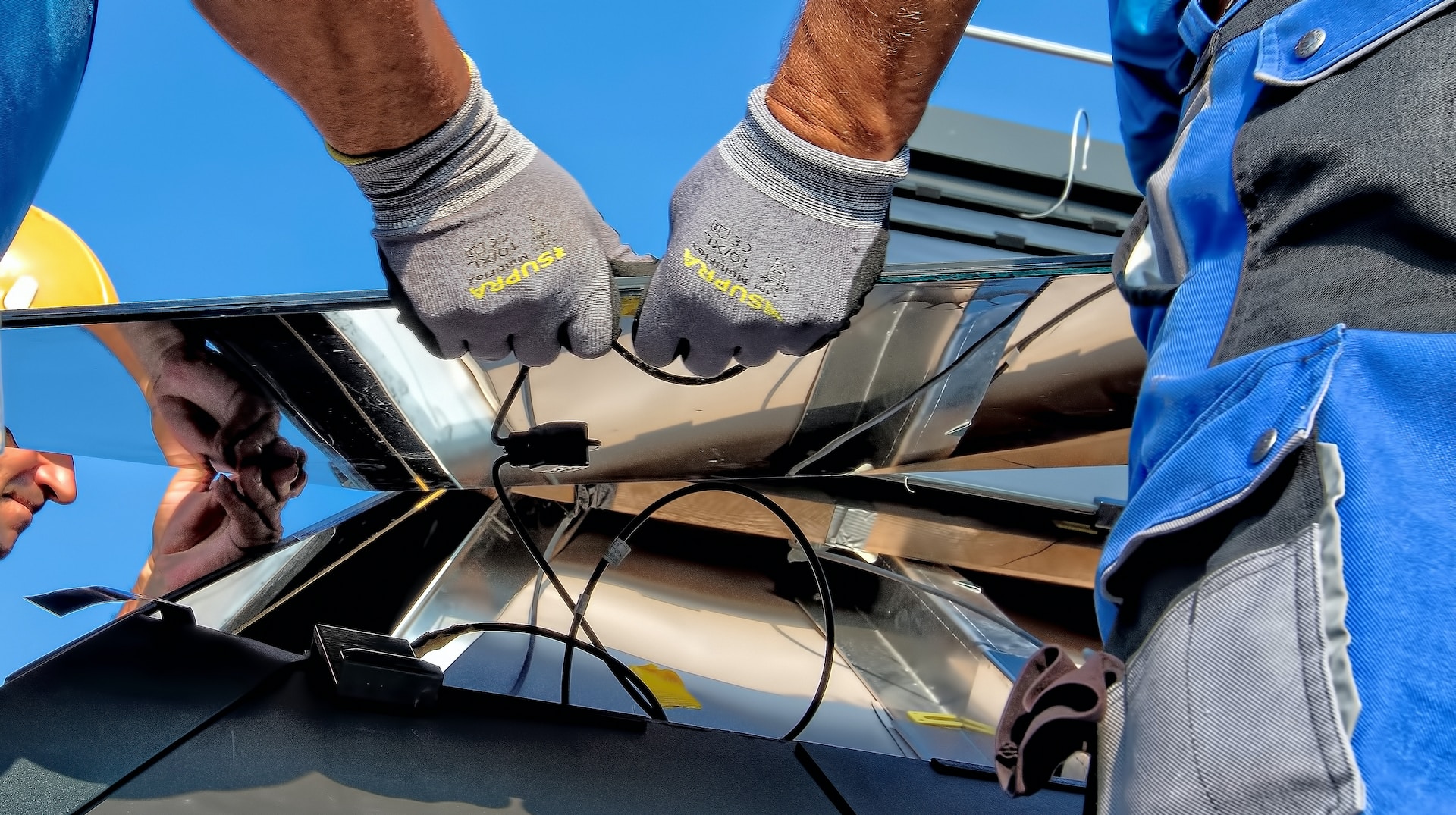
Maintenance of the system
A key element in maintaining the effectiveness of the panels is systematic maintenance. Here are some steps to consider to enjoy the long-term benefits of solar energy.
- Regular efficiency checks: Periodically checking the efficiency of photovoltaic panels allows you to catch possible problems at an early stage. Specialists conduct efficiency tests, monitoring energy generation against expectations.
- Panel cleaning: Dirt, dust, bird droppings, or leaves can settle on the surface of the panels and negatively affect their efficiency. Regular panel cleaning is an important step in maintaining optimal performance.
- Monitoring inverter performance: The inverter, which converts direct current to alternating current, is a key component of a photovoltaic system. Regular monitoring of its operation allows for quick detection of any faults or irregularities, enabling effective intervention.
- Proactive maintenance activities: In the event of a failure or reduced performance of the panels or inverter, it is important to take proactive maintenance actions. These actions may include replacing faulty parts, updating software, or adjusting the system to possible changes in environmental conditions.
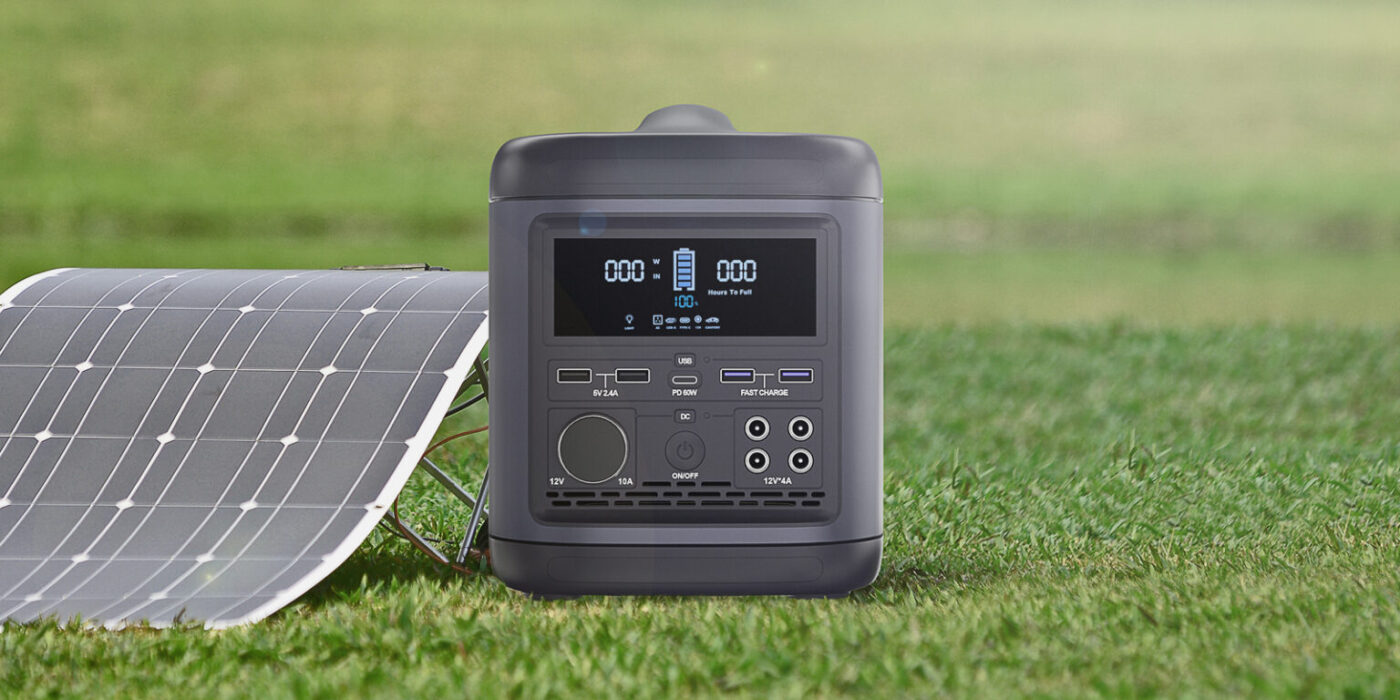
The need for energy storage
With the growing importance of solar power also comes the need to store stored electricity. Here’s why storage is becoming a key component of photovoltaic systems and how this need can be met.
One of the challenges of solar energy is its unstable availability. Photovoltaic panels generate energy only when sunlight is available, which means that production can be significantly reduced at night or during cloudy days. Energy storage allows excess energy generation to be accumulated during periods of abundant sunlight and used during periods of lower generation.
Energy storage is becoming crucial due to the need to maintain continuous access to electricity regardless of weather conditions or time of day. With storage systems installed, solar energy can also be used during nighttime hours or in situations where energy production from panels is limited.

How can solar energy be stored?
There are several popular solutions for energy storage, including batteries, water pump systems, or chemical solutions such as thermal storage or liquid battery technologies. Choosing the right solution depends on individual needs, budget, and local conditions.
Newell Power Station
We may not offer energy storage to meet requirements such as heating your home or powering all available light sources, but we do have something for those who would like to prepare for unexpected power outages or take advantage of solar energy on a plot of land, camping, or in an RV. That solution is our power stations.

Power Station Newell Asvala Mini 220 V 24000 mAh PD 18 W
Newell Asvala Mini is a portable Power Station with a capacity of 24000 mAh, combining the functions of a power bank and a power source for various devices. It is designed for travelers, camping enthusiasts, drone operators, and photo-video makers. It has USB ports, including USB-C, an AC outlet, and an induction panel, providing convenient access to power in almost any situation. It can be charged from an outlet, car cigarette lighter, or using popular solar panels.
Power Station Newell Argus
The Argus series includes 4 power stations with different battery capacities. The largest models (Argus 2200 and Argus 1200) can be charged using solar panels compatible with MC4 connectors. Solar panels with a DC voltage of 18 V – 48 V are recommended. Charging time in full sunlight is 3-4 hours with 4 200 W panels or 6-7 hours with 2 200 W panels each.
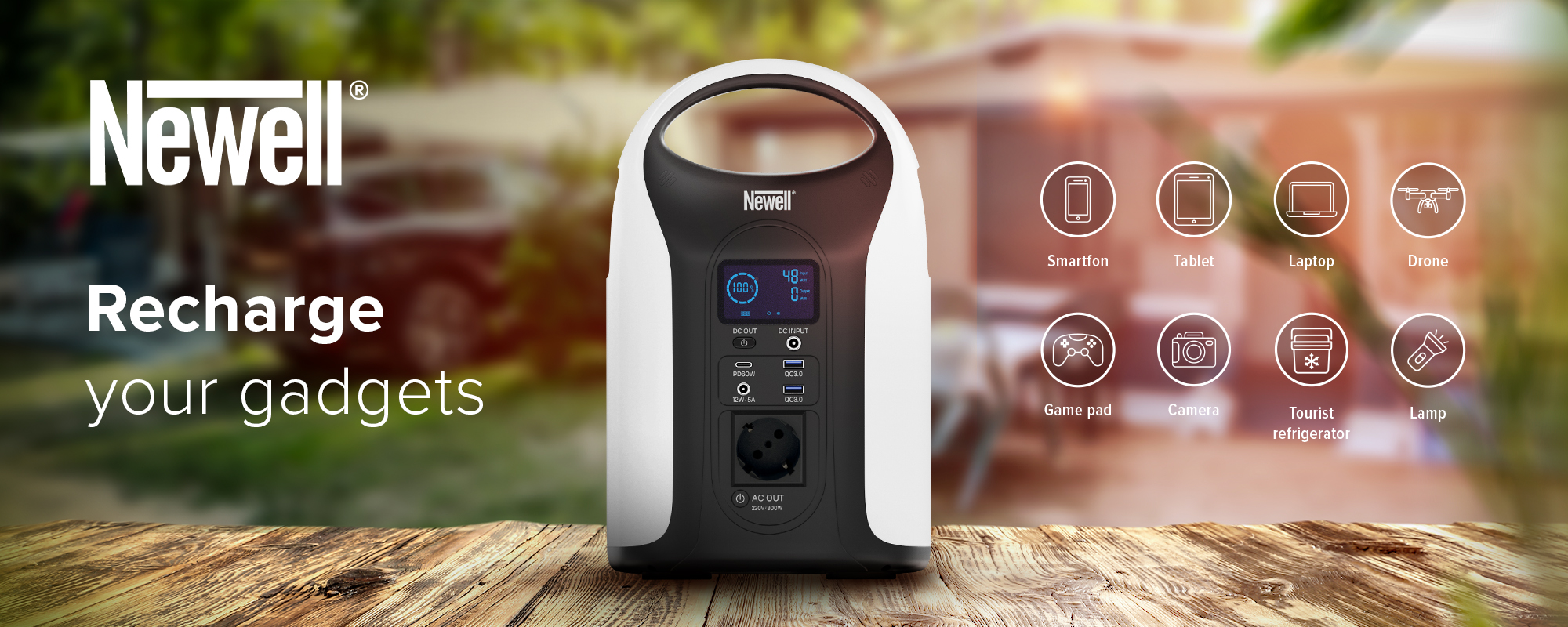
Power Station Newell Pearl AC 283 Wh PD 60 W
Newell Pearl is a modern power station with a 283 Wh capacity. It has a traditional AC power outlet, a USB-C port with PD, 2 USB ports with QC 3.0, and a DC voltage outlet. Support for Power Delivery and Quick Charge technology ensures fast charging of devices. The built-in LED panel can serve as a portable light source. We also took care of protection against overheating, overloading, and overcharging. It’s an ideal choice for travelers and nature lovers.
Power Station Newell Asvala 220 V 46400 mAh PD 45 W
Newell Asvala 220 V is a portable power bank with a capacity of 46400 mAh to charge and power other devices. It has two USB Type-A ports, a USB-C port, and an AC outlet (220-240 V) compatible with various plugs. Here it is also possible to connect to solar panels.

Postaw na energię słoneczną!
The financial, environmental, and social benefits of using solar energy are undeniable. Savings on energy bills and reduction of CO2 emissions are just some of the many benefits that come from investing in a photovoltaic system. It’s worth remembering that before you decide to install photovoltaic panels, it’s a good idea to check with specialists to tailor the solution to your individual needs and local conditions. And if you have questions related to power stations, be sure to contact us. Our team will be happy to support you – on our Facebook or Instagram.

